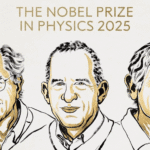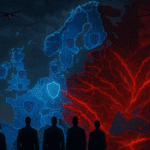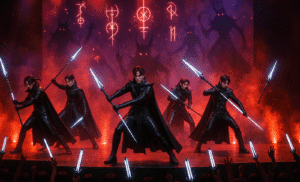Centuries after the rise of the Russian Empire, its legacy continues to cast a shadow across Eurasia, shaping wars, alliances, and identities. From the plains of Ukraine to the mountains of the Caucasus and the steppes of Central Asia, Russia’s imperial legacy is not just a story of the past; it is a living force that defines its politics, ambitions, and conflicts today. The echoes of old imperial borders and power structures have re-emerged in modern wars, as Moscow seeks to preserve its influence over regions once ruled by the tsars and later absorbed into the Soviet Union.
Historically, Russia’s imperial project began in the 16th century under Ivan the Terrible, expanding steadily eastward into Siberia and southward into Central Asia and the Caucasus. By the late 19th century, it had become one of the largest empires in history, stretching from the Baltic to the Pacific. Russian colonization was multifaceted; it involved military conquest, forced Russification, religious conversion to Orthodoxy, and settlement policies that displaced or assimilated local populations. When the empire collapsed in 1917, the Soviet Union soon replaced it, repackaging imperial control under socialist ideology. Moscow continued to dictate terms to the diverse nations and ethnicities within its orbit, enforcing a new kind of colonialism through ideology, central planning, and repression.
With the Soviet Union’s dissolution in 1991, fifteen independent states emerged, but independence did not bring complete freedom from Russian influence. Many former Soviet republics remained tied to Moscow through military bases, economic dependencies, and cultural legacies. Russian remains a dominant language across much of Eastern Europe and Central Asia, a vestige of the Russification campaigns that once sought to homogenize the empire. Economically, pipelines, railways, and trade networks still link these states to Russia, creating leverage that Moscow frequently uses to exert pressure.
The political landscape of post-Soviet space reveals how imperial habits persist. Russia has repeatedly intervened in neighboring states, often under the pretext of protecting Russian speakers or maintaining regional stability. In the 1990s and early 2000s, Moscow fought two brutal wars in Chechnya to crush separatism and reassert central control. In 2008, it invaded Georgia to back separatists in South Ossetia and Abkhazia, territories that Russia continues to occupy and recognize as independent. The 2014 annexation of Crimea and the ongoing war in Ukraine are perhaps the clearest expressions of this neo-imperial mindset. Moscow’s invasion, justified by claims of historical unity and security concerns, seeks not just territorial gains but the reassertion of Russia’s authority over lands it once ruled.
Even beyond Ukraine, Russia’s involvement in regional conflicts echoes its old imperial playbook. It maintains peacekeepers in Nagorno-Karabakh, a region torn between Armenia and Azerbaijan, though its neutrality is widely questioned. It has built military alliances through the Collective Security Treaty Organization (CSTO), using “security cooperation” as a tool of control. These modern interventions mirror Tsarist and Soviet strategies: establishing buffer zones, deploying proxy forces, and manipulating local divisions to sustain influence.
The underlying principle guiding these actions is a belief in a “sphere of privileged interests,” often referred to in Moscow as the “near abroad.” This notion sees former Soviet states not as fully sovereign entities but as parts of a greater Russian world whose orientation must remain aligned with Moscow. It is this mindset that drives Russia’s resistance to NATO and EU expansion and fuels its recurring conflicts with neighboring countries seeking to pivot westward. Hybrid warfare, combining disinformation, cyberattacks, economic coercion, and limited military operations, has become the modern toolset of an old imperial instinct.
The persistence of this imperial worldview has profound global implications. For Russia, it means an unending cycle of confrontation and isolation, as efforts to restore lost influence collide with the realities of a post-colonial world. For neighboring nations, it means contested sovereignty, economic vulnerability, and enduring insecurity. And for the international community, it challenges the very principles of sovereignty and non-aggression that underpin the modern world order.
Russia’s wars today are not simply about borders; they are about identity, memory, and the unfinished business of empire. The ghosts of Tsars and Soviets alike still guide the Kremlin’s hand, revealing how deeply history can embed itself into the politics of the present. As Russia wages new wars on old frontiers, one truth remains clear: the empire may have fallen, but its logic still lives on.


















